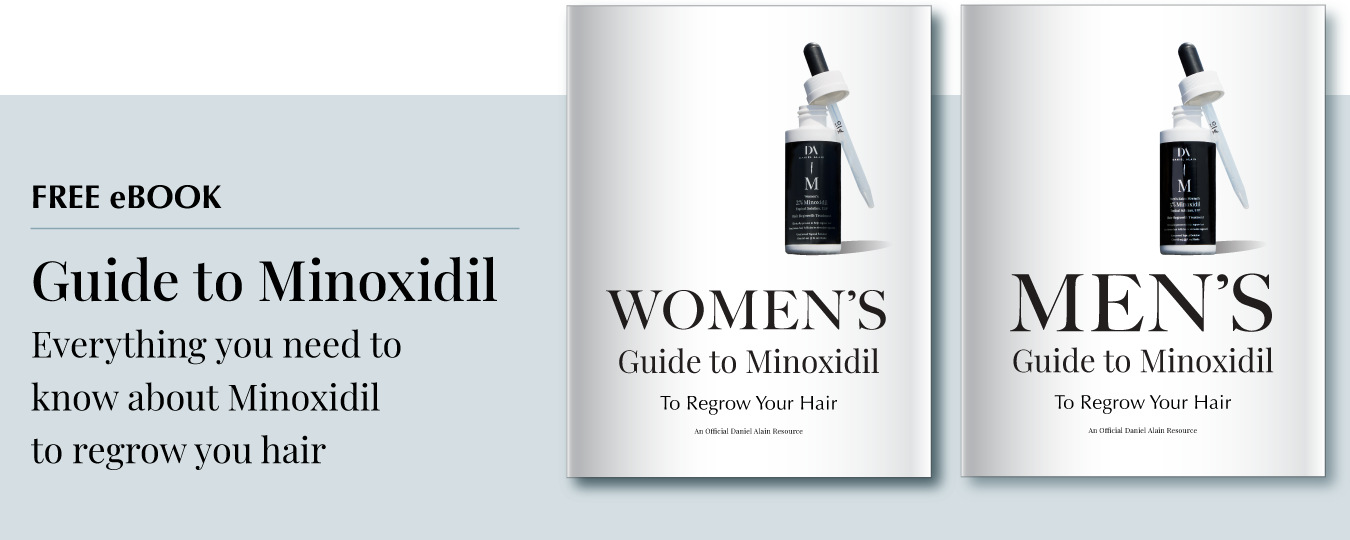How to Deal with Hair Loss after COVID-19?
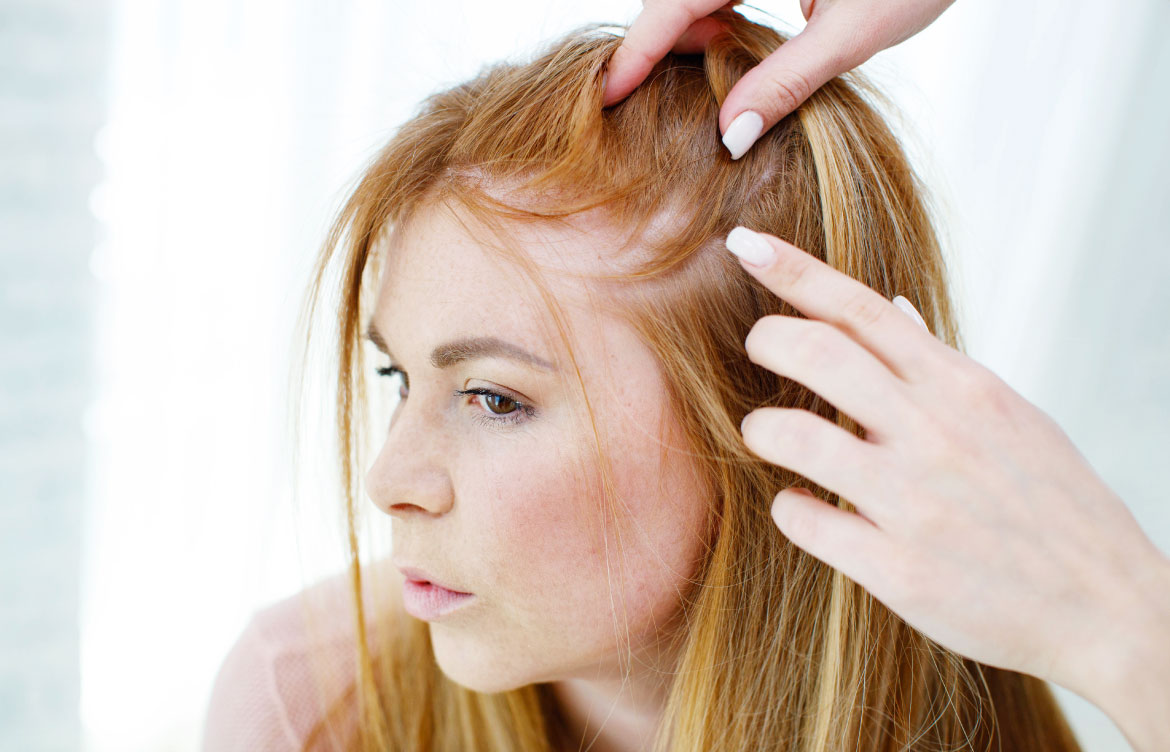
COVID-19 affected all of us in many ways, and while things have mostly normalized in our world, a lingering symptom is still affecting many people: COVID hair loss.
Hair loss from COVID isn’t a commonly talked about symptom. Health authorities cautioned us to look for a long list of flu-like symptoms, like trouble breathing, loss of taste, or coughing. Yet, despite its uncomfortable and discouraging effects, hair loss didn’t appear in mass media advertisements or common dialogue about COVID.
Why is that, considering thousands of people are suffering from this sustained symptom, even long after recovering from COVID?
If you have experienced COVID and hair loss, you’re not alone. The symptom affected men and women across the globe.
Here at Daniel Alain, we lead with knowledge. The good news is you have many hair loss solutions to choose from, like 100% premium human hair wigs or INTACT, our anti-hair shedding treatment. But before we go into depth about the solutions that can help you regain control over your hair loss, we need to examine exactly what’s causing COVID hair loss.
Awareness is the most essential first step in any hair loss journey. We’ll walk you through exactly what causes hair loss due to COVID and share the best course of treatment to help you through this difficult time.
DOES COVID-19 CAUSE HAIR LOSS?

In the midst of the COVID-19 breakout, the CDC wasn’t convinced that COVID was causing hair loss. But as with most new events, time has a way of proving otherwise.
When we interviewed Daniel Alain’s Chief Medical Officer, Dr. Andy Goren, who was on the frontlines of COVID-19 and hair loss research, he reported that:
“Dermatologists all around the world are seeing an increased amount of patients with hair loss. In most cases the new COVID related hair loss - COVID effluvium is related to stress, depression and the many things happening in life due to this catastrophe. There are more and more cases, but in most cases it is a temporary type of hair loss.”
The Journal of the American Academy of Dermatology (JAAD) confirms this. They describe telogen effluvium (stress-related hair loss) as the most common COVID-19 hair loss type. Stress-related hair loss can result from various stress triggers.
It could be mental stress from a tough month at work, physical stress triggered by a nutritional deficiency, or, yet another stress symptom triggered by COVID-19.
The JAAD cites a study of 214 cases of telogen effluvium following a COVID-19 infection. The average time for post-COVID hair loss to develop was about two months (57 days), though other studies found different timelines, from 45 days to 90 days.
In these cases, the infection caused an immediate anagen release (leaving the hair growth cycle’s growth phase) and converting follicles to catagen (shedding).
The University of Utah’s health department interviewed Powell Perng, a dermatologist and alopecia specialist, for his insights on COVID-related hair loss. Perng describes telogen effluvium as when 50% of your hairs are resting (telogen) and shedding (catagen). This is a massive increase from the average 10% when your body isn’t stressed.
He also says that COVID hair loss is more common in patients who experience a prolonged COVID infection, with symptoms lasting from a few to several months. In these prolonged periods of bodily stress, Perng says telogen effluvium is more likely than for people with shorter-term infections.
Can the COVID Vaccine Cause Hair Loss?
The COVID vaccine is relatively new, so it’s hard to know what its long-term effects on hair and the scalp ecosystem will be. However, the CDC has included a few hair loss cases associated with the Pfizer and Moderna COVID-19 vaccines. A quick search through the Vaccine Adverse Event Reporting System (VAERS) shows a few reports of alopecia:
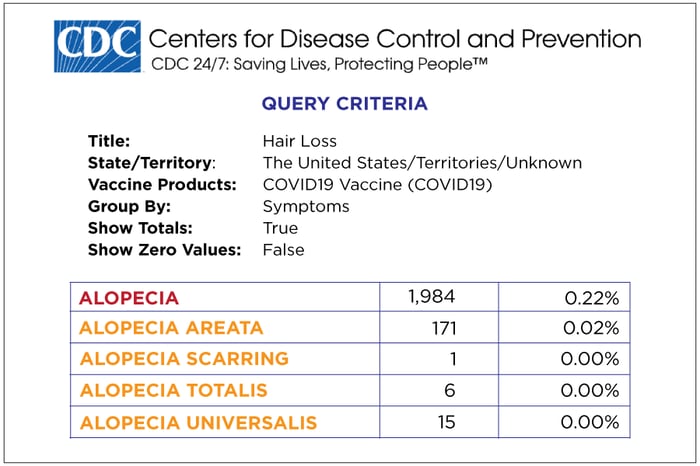
The second column refers to the number of incidents reported (out of approximately 889,000). The third refers to the percentage of total reports with these symptoms.
We can see 1,984 reported alopecia cases due to the COVID vaccines. One medical study examined timelines for patients who struggled with alopecia areata after receiving the COVID-19 vaccine. Participants experienced hair loss symptoms anytime between 1-3 months after a COVID-19 vaccine dose. Unfortunately, that same study even examined one woman who experienced alopecia totalis, complete hair loss, including hair lost from her eyelashes, scalp, and eyebrows, after the vaccine.
Participants had a wide range of medical histories, some with no hair loss history, others with autoimmune diseases like Hashimoto’s disease, and others with thyroid conditions.
Other studies have found similar hair loss incidents following the COVID-19 vaccine. Again, the numbers are relatively small, and larger-scale studies are needed to dive deeper into the results. For example, one Italian study found three cases of alopecia after the vaccine, yet cautioned against blanketing hair loss as a common symptom.
Remember that hair loss could affect more people who took the vaccine, as they may not have all reported it or made the connection. Similarly, it’s also possible the unreported cases might have the COVID-19 vaccine and hair loss in common, yet a different cause is the culprit.
While the research is still emerging, let’s look at what we know about the duration of existing cases.
HOW LONG DOES COVID HAIR LOSS LAST?

In telogen effluvium cases, hair loss from COVID would last as long as your infection’s symptoms linger. If your infection lasts a few weeks or less, like most people infected with COVID-19, your hair loss won’t last longer than a few months.
However, longer-term hair loss is most common in patients with long COVID who have lingering symptoms for a few months. Stress-related hair loss doesn’t cause lost hair follicles; rather, they’re “resting” and will eventually regrow. Plus, some patients might experience chronic telogen effluvium, which can cause hair loss to last more than six months — up to a couple of years.
However, telogen effluvium is different from the cases of alopecia areata that were triggered by COVID-19, in which case symptoms could last years or a lifetime.
We know — it sounds discouraging. But the light at the end of the tunnel is COVID hair loss regrowth systems and breakthrough solutions.
HOW TO stop hair loss after covid
If COVID-19 isn’t bad enough, the trickle effects of hair loss on your self-confidence can feel devastating. The things you love become stressful as hair loss becomes a constant concern in your social, professional, and intimate life.
Undoubtedly, overcoming the mental effects takes perseverance and patience, but we’ve seen thousands of our clients regain control and confidence with the right hair loss solution. COVID hair loss doesn’t have to dull your shine forever.
We’ll walk you through a few options for COVID hair loss treatment.
See if Minoxidil will Regrow Your Hair
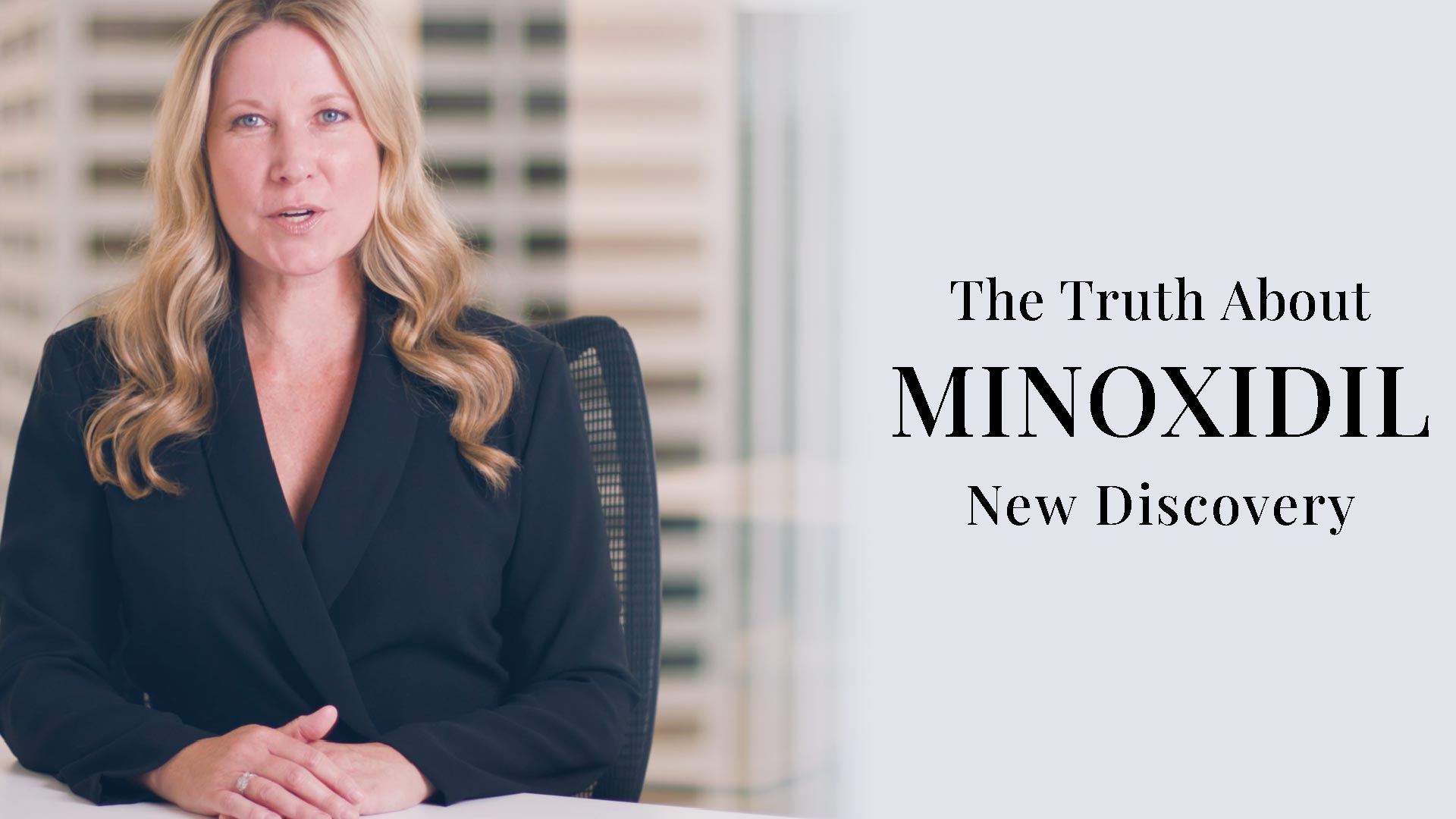
You’ve likely come across Rogaine® in your research on hair loss solutions. It stands out from other treatments for its FDA-approval status (and over-the-counter accessibility).
On top of that, it has promising regrowth claims all over its packaging. Rogaine® is the most popular branded version of Minoxidil, one of two FDA-approved drugs for hair loss. Minoxidil is a drug that speeds up your hair growth cycle and extends its growth phase. But results are finicky, sometimes taking as long as a year. Plus, some people spend all that time waiting to no avail.
That’s because Minoxidil only works for about 50% of men and 30-40% of women. Until recently, medical experts couldn’t understand why. So we dove into the research to study the drug and conduct our own clinical trials. We found one common factor in Minoxidil responders: SULT1A1 enzyme activity in their scalps.
This means that Minoxidil only works for those with the SULT1A1 enzyme activity. Instead of waiting months to know whether you’ll experience regrowth, we developed a Minoxidil Response Test (MRT) for men and women to assess your scalp’s enzyme activity. The test gives you results within 7-14 days.
Remember that Minoxidil is only FDA-approved for genetic hair loss, regardless of your chosen route. So while COVID hair loss triggering alopecia could subside with Minoxidil, stress-related hair loss won’t. In that case?
A better route is to focus on retaining your existing strands.
Retain Your Hair with INTACT Anti-Hair Shedding Treatment
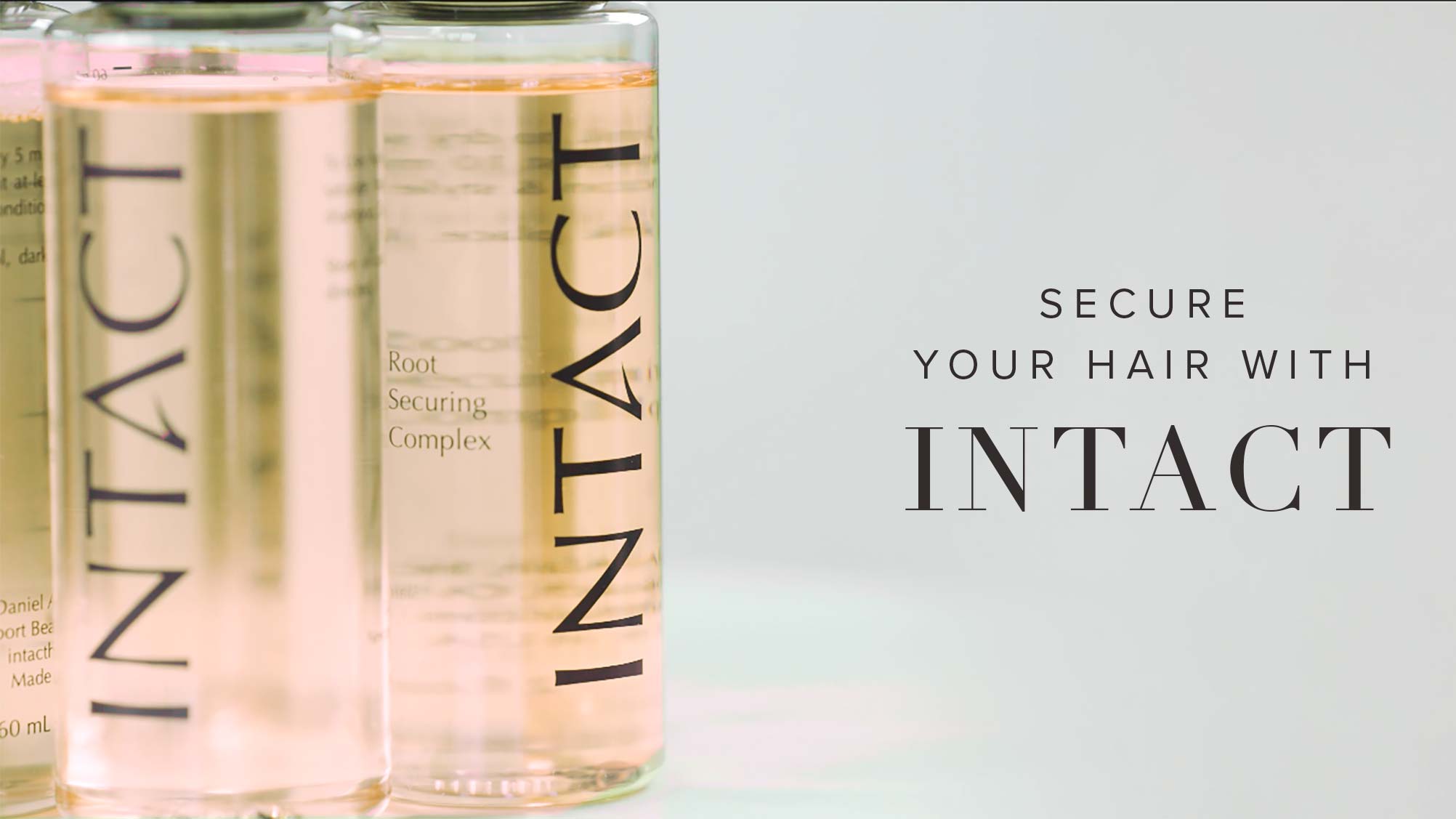
INTACT is a cosmetic anti-hair shedding treatment that locks your hair in place at the root to prevent hair fall and shedding. The treatment is one of the fastest ways to retain hair, taking only 30 minutes to absorb and one use to show results.
What sets INTACT apart from other cosmetic treatments is its patented Pililock® Sevilla Orange Complex — scientifically created over five years and clinically proven to keep your hair strands in place even during styling or showering. That secure hold also translates to a little lift, pumping up the volume!
Our anti-hair shedding treatment is a fabulous option for people who don’t respond to Minoxidil or don’t want to deal with its side effects. Plus, it complements other lifestyle choices or the waiting period for telogen effluvium to subside.
You can apply INTACT about half an hour before showering. It’s efficient for both men and women in retaining existing hair.
Dr. Andy Goren weighs in:
“Studies on INTACT have shown that it's extremely effective at reducing shedding induced by mechanical force. INTACT contracts the arrector pili muscle. It's a mechanical way of stopping the hair from falling.”
FIND A SOLUTION TO COVID HAIR LOSS AT DANIEL ALAIN
COVID-19 is one of the most widespread, stressful experiences affecting the globe. While hair loss isn’t a blanket symptom, the illness and subsequent vaccine have been proven to cause some alopecia triggers and stress-related hair loss.
Luckily, most cases will subside as you recover from the COVID-19 infection. And if you have trouble mitigating the shedding? That’s why Daniel Alain has been in business for over 30 years — to help men and women like you regain control of their lives by feeling confident in their hair again.
Whether it’s a complete hair regrowth system, 100% premium human hair wig, or a clinically-proven anti-hair shedding treatment — Daniel Alain is here to help you love your hair again.
The world is moving past COVID-19. So let’s make sure we leave hair loss stresses behind, too. Contact us today for a beauty consultation to discuss your options!
book a free consultation
Our stylists will help you find the right hair loss solution just for you.
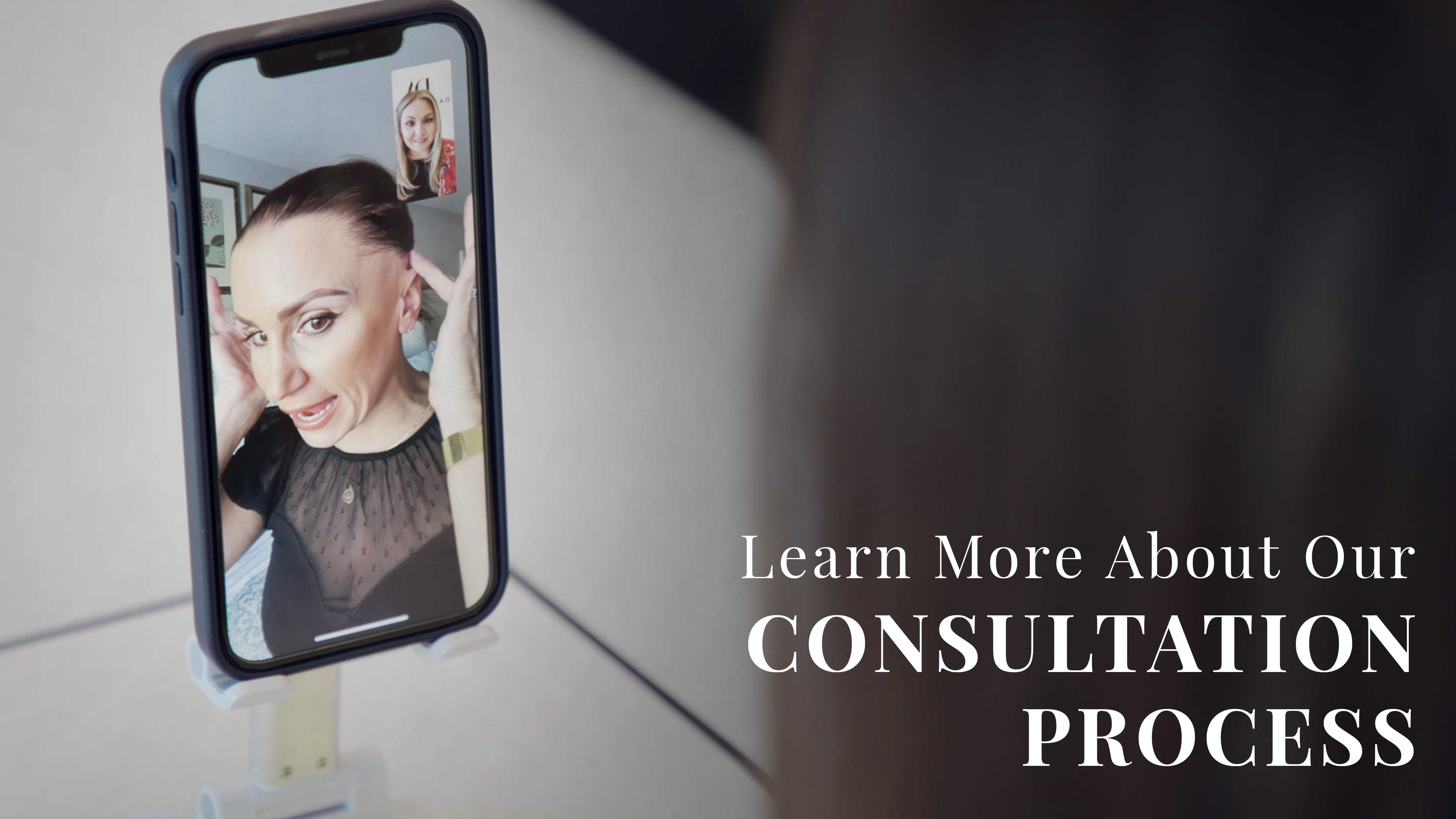
Frequently Asked Questions
Is Hair Loss a Side Effect of COVID?
Yes. Doctors have found many COVID-19 cases where hair loss was a symptom. There were two unique types of hair loss in COVID-19 patients: alopecia areata and telogen effluvium (stress-related hair loss).
The most common is telogen effluvium, which is caused when an external stressor causes more hair follicles to remain in the telogen/catagen hair growth stages. The condition promotes hair fall and lasts 3-6 months or longer, depending on when you address the stressor. Unfortunately, this type of hair loss isn’t treatable by Minoxidil, as it isn’t a genetic hair loss type. However, recovering from COVID-19 will similarly mitigate your hair loss symptoms.
Notably, people who experience long COVID are more prone to COVID hair loss because the stressor lasts in the body for a longer period. Additionally, some patients with various health histories have displayed hair loss as a symptom of the COVID-19 vaccine.
How Severe is COVID Hair Loss?
Since there haven’t been many large-scale studies on COVID hair loss and COVID vaccine-related hair loss, it’s difficult to pinpoint severity across the board. However, a few smaller studies have described hair loss symptoms as varied, with men and women presenting different levels of severity.
Some patients experience light thinning, comparable to temporary, seasonal hair loss. However, others experience much more severe symptoms like widening hair parts and bald patches. A tiny subset even experienced alopecia totalis, though that instance was linked to the COVID-19 vaccine.
Is COVID Hair Loss Permanent?
In most cases? No. Most COVID hair loss cases are telogen effluvium cases, which show improvement within a few months at most. However, some long-COVID patients might experience longer recovery and improvement times, as long as a couple of years.
Does COVID Hair Loss Go Away On its Own?
Yes, if COVID hair loss is found to be telogen effluvium, it will subside once you recover from your infection. However, it really depends on your health history and the specific hair loss cause. For example, if COVID or the vaccine triggers alopecia, you might need more robust treatment like Minoxidil to treat symptoms.
Similarly, severe cases of alopecia totalis aren’t likely to subside. This is a challenging situation, but hair loss solutions are still available. In that case, you can feel secure with a 100% human hair wig that bounces and sways with natural movement rivaling even your previous bio hair!
Is There a Way to Immediately Stop Hair Loss After COVID?
Yes. The fastest way to immediately stop hair shedding loss after COVID is through an anti-hair shedding treatment, INTACT. Daniel Alain’s team spent five years testing INTACT and clinically demonstrating the efficacy of its novel Pililock® Sevilla Orange Complex for hair retention. The result?
An affordable, fast-acting treatment that will work the first time you try it.
The only other immediate solution is a 100% European human hair wig from our Follea collection. While the wig can’t stop hair loss, it can mask it more effectively than any other treatment in the shortest possible time frame. Just check out our social media page for Follea friends who sport 100% premium European human hair wigs and look fabulous while doing so!
What is the Best Treatment for COVID Hair Loss?
The best treatment for COVID hair loss is one that mitigates your symptoms, has few side effects, and makes you feel confident again. Additionally, the treatment should line up with your specific hair loss cause. This might look like Minoxidil or a 1–% European human hair wig for someone with androgenetic alopecia, or a week off work for someone with stress-related hair loss.
Does INTACT Actually Work?
Yes, INTACT is clinically proven to retain existing hairs even during high-shedding activities. While the product doesn’t foster hair regrowth, it’s still a great mitigator for hair fall and shedding.
Is INTACT Safe to Use on My Hair?
Yes, we tested INTACT for any adverse effects in our CLIA-certified lab. After years of clinical trials and positive results, we don’t see any way INTACT could harm your hair. We know it’s safe to use on all hair types, including colored or chemically treated hair and extensions. Still, none of our study participants were pregnant, breastfeeding, or children. So while we have no reason to think INTACT could pose a risk to people with those criteria, it’s prudent to consult a doctor before trying INTACT.
How Do I Properly Apply INTACT?
Here are a few steps to follow when applying INTACT:
- Fill the applicator to 5 mL.
- Use the applicator to apply the product to different sections of your dry scalp.
- Massage the product into each area.
- Leave for 30 minutes.
- Wash with shampoo and conditioner, and style as usual.
- Seal the bottle tightly and store it away from sunlight.
Should I Use INTACT Every Day?
You should only apply INTACT on the days you wash your hair. For example, if you wash your hair daily, you can use INTACT daily. Otherwise, limit applications to the days you wash your hair.
Can INTACT Regrow My Hair?
No, INTACT is a cosmetic treatment focusing on hair retention, not regrowth. The product can retain existing hairs by securing each hair at the root. This helps mitigate the effects of hair loss — but it can’t regrow lost hair. Specifically, INTACT temporarily defends the hair strand’s integrity, especially during high-shedding activities.
What Happens If I Wash INTACT Out of My Hair in Less Than 30 Minutes?
You should leave INTACT on your hair for at least 30 minutes for best results. If you wash it out sooner, we can’t promise you’ll achieve the same results. It might not be enough time for the product to secure your hair follicles. Browse a magazine or take a much-needed meditation session as you wait — the time will fly by in no time, and you’ll feel confident that you’ll see results!
Will Minoxidil Really Work to Regrow Hair?
Minoxidil works for 30-40% of women and 50% of men. However, all responders have two things in common:
- SULT1A1 enzyme activity
- Androgenetic alopecia, as their hair loss cause
If you don’t meet any of the above criteria, Minoxidil might never work for you. However, those with the necessary enzyme activity and genetic hair loss experience greater hair density and regrowth within a year.
Why Doesn't Minoxidil Work for Everyone?
Our dermatologists and medical experts discovered the common denominator in people who respond well to Minoxidil: SULT1A1 enzyme activity. While Minoxidil takes months to show effects, those without this enzyme activity will never experience regrowth.
And if you have the SULT1A1 enzyme activity and still don’t see results? Remember, Minoxidil is FDA-approved for androgenetic alopecia. If you have a different hair loss cause, you might need a different treatment plan to mitigate the effects. For example, patients suffering from chemotherapy-induced hair loss likely won’t experience positive results with Minoxidil. Their hair loss probably won’t subside until the chemo treatment is complete. In the meantime, a 100% premium human hair wig provides ample coverage, luscious locks, and confidence.
How Does Minoxidil Testing Work?
Daniel Alain’s Minoxidil Response Test (MRT) is the fastest way to test your hair for the SULT1A1 enzyme activity required to promote hair regrowth with Minoxidil. First, you need to order and register your testing kit. Next, you pluck a few hair strands and mail them to our CLIA-certified lab. Finally, we’ll test your hair strands to detect the SULT1A1 enzyme activity necessary to activate Minoxidil.
Once we have your results, we’ll let you know whether Minoxidil will work for you. If you test positive for the SULT1A1 enzyme, you’ll respond to Minoxidil.
Is There a Way to Increase Minoxidil Absorption?
Daniel Alain’s SULT1A1 enzyme Booster kit increases SULTA1A activity by 7X. This enzyme is necessary to activate Minoxidil’s active component, minoxidil sulfate, and without it, men and women won’t ever experience results with Minoxidil.
Our studies show that 75% of men who take the Booster see hair regrowth after just two months.
